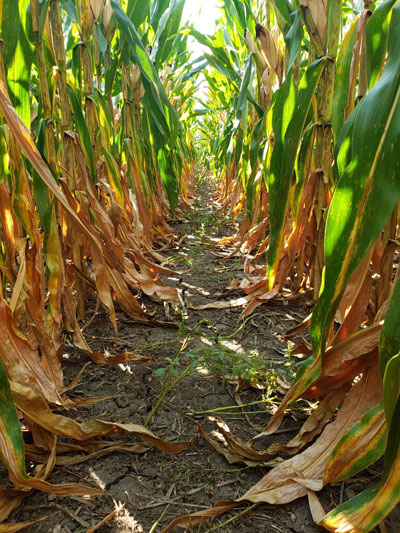Weeds that escape control by in-season management practices can cause several problems, including the possibility of reduced harvest efficiency and crop yield. Even if these factors do not justify an herbicide application, it is important to consider the future costs of seeds produced by those escapes – particularly if those escaped weeds produce a lot of seed and/or are herbicide resistant.
Just a few escapes of species such as waterhemp or Palmer amaranth can have a big impact (Figure 1). For example, research conducted in Georgia showed that one female plant in five acres added about two million seeds per acre to the soil. Those seeds can have impacts for many years. It took six years of total Palmer amaranth control to deplete the seedbank by 98% in Texas. In some situations, scouting during the weeks leading up to harvest may provide an opportunity to remove these plants by hand to reduce the number of seeds in the soil.

Figure 1. The waterhemp plants growing between these corn rows may not have reduced grain yield, but they will produce seed that must be controlled in future years. Photo by Sarah Lancaster, K-State Research and Extension.
Fall scouting can help plan for future control
Scouting for weeds at harvest, even if you simply make notes from the combine, is important for planning future weed management.
When scouting, make notes about:
- which weed species are present,
- where weed escapes are present, and
- any changes in the size or location of weed escapes.
Some observations might be the result of soil or environmental conditions, while others might suggest problems with the herbicide selection or application equipment. However, some of these escapes might indicate the presence of herbicide-resistant weeds in your field – especially if the same herbicide program has been used for a number of years. Two examples of observations that might indicate herbicide resistance are 1) a growing patch of a particular species, or 2) herbicide failure on a few plants of a single species that is normally controlled.
References: Bagavathiannan and Norsworthy, 2012
Sarah Lancaster, Extension Weed Science Specialist
slancaster@ksu.edu
Tags: weeds scouting herbicide resistance seedbank weed management